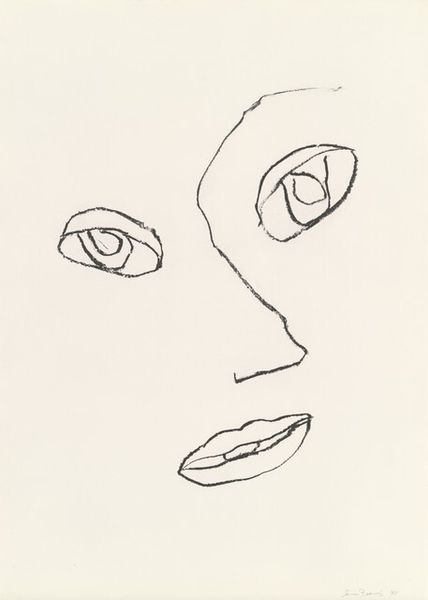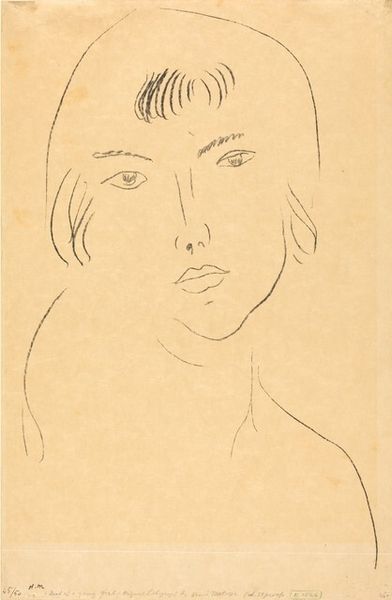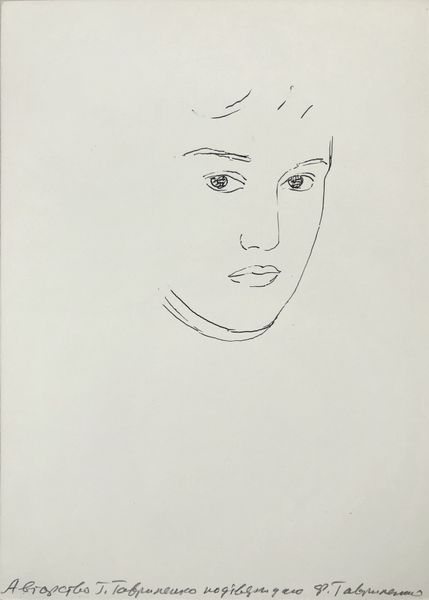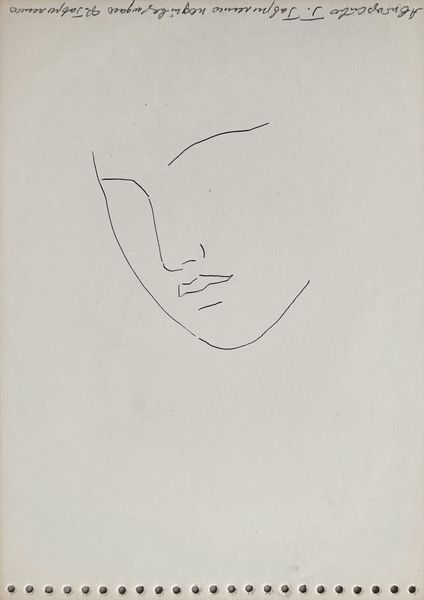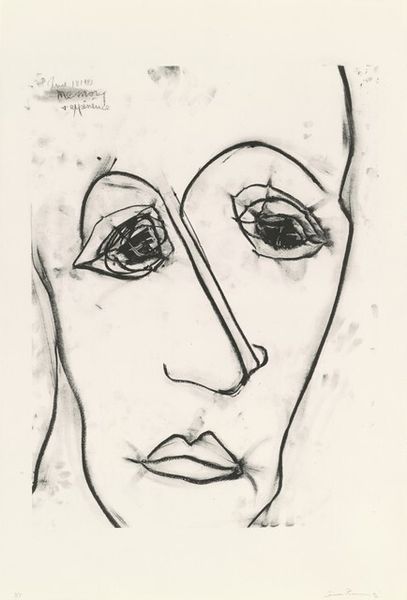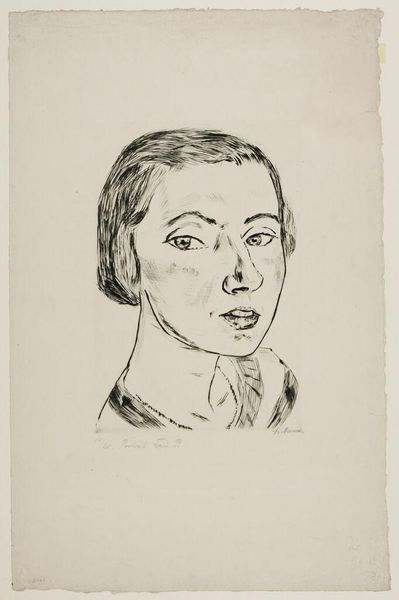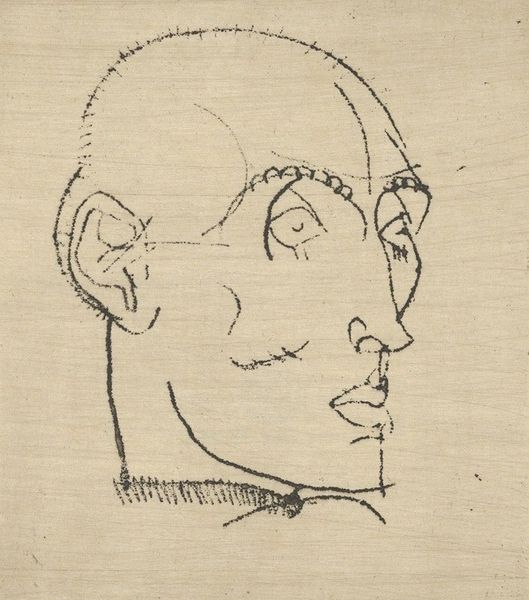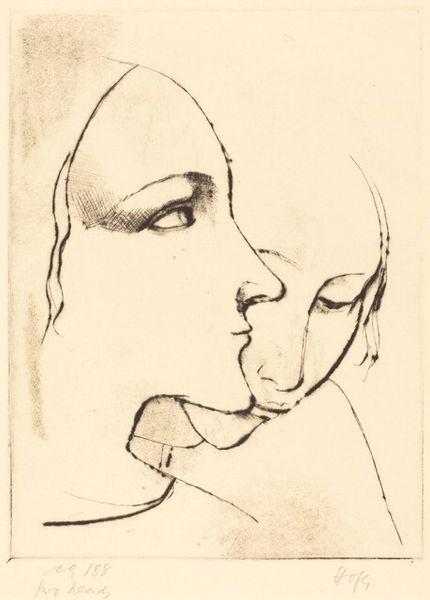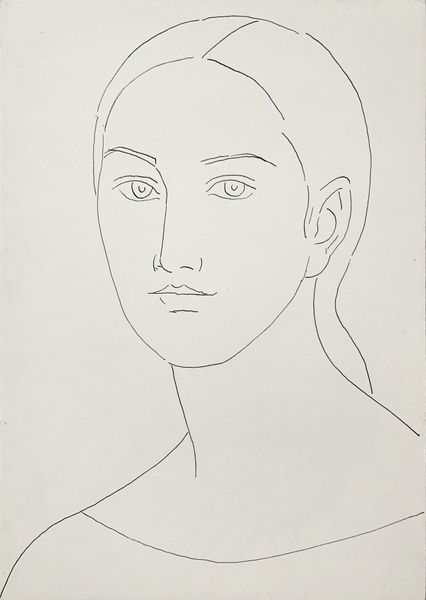
drawing, print, ink
#
portrait
#
drawing
# print
#
caricature
#
caricature
#
ink
#
portrait drawing
#
modernism
Dimensions: plate: 23.9 x 18.2 cm (9 7/16 x 7 3/16 in.) sheet: 29 x 22.4 cm (11 7/16 x 8 13/16 in.)
Copyright: National Gallery of Art: CC0 1.0
Curator: We’re looking at Henri Matisse's "Maria Lani" from 1928. It’s a simple ink drawing, almost a caricature, really. What strikes you first? Editor: That single, unwavering line defining her skull is intensely unsettling. The sheer economy of means – so little ink, so much implied. You sense a real tension, doesn’t romanticize her. Curator: Precisely. It captures something fleeting, doesn't it? The social context is key here; Lani was this obscure actress who managed to become the muse of countless artists in Paris at the time. Her persona was pure artifice, it has been suggested. Editor: Artifice layered upon artifice. So Matisse reduces her to these stark essentials; hard lines and solid blacks and exposes what he perceives, with ruthless clarity and it suggests that something is amiss and he saw right through the social construction of her, exposing perhaps, emptiness. Curator: Right, you can sense the power dynamic at play. The portrait reveals something—or maybe it's just as much Matisse revealing himself. The labor of the line, seemingly spontaneous, actually speaks of control. Editor: Think about the ink itself too. It's a mass-produced commodity that enabled democratization of art, if one accepts that printmaking qualifies as a form of art; then you're able to multiply the persona. It also feels deliberately unfinished somehow; perhaps it suggests a commentary about modern ideas and representation. Curator: Interesting! Because of its inherent multiplicity, it allows for different views. The speed with which ink dries, allowing for those dark unwavering lines we find striking... a decisive image born of swift gestures... Editor: Ultimately, she becomes a cipher for his ideas about representation. Even that blank paper surrounding her isn’t empty—it amplifies the deliberate starkness of her form. And that negative space feels… well, rather ominous, as if to devour its subject, don't you agree? Curator: Perhaps you're right, she's disappearing into the backdrop. And Matisse, as usual, is leading us on a strange journey that makes you reconsider the essence of portrayal. Editor: Indeed. The work is a powerful object—a few lines can trigger these many, provocative feelings.
Comments
No comments
Be the first to comment and join the conversation on the ultimate creative platform.


